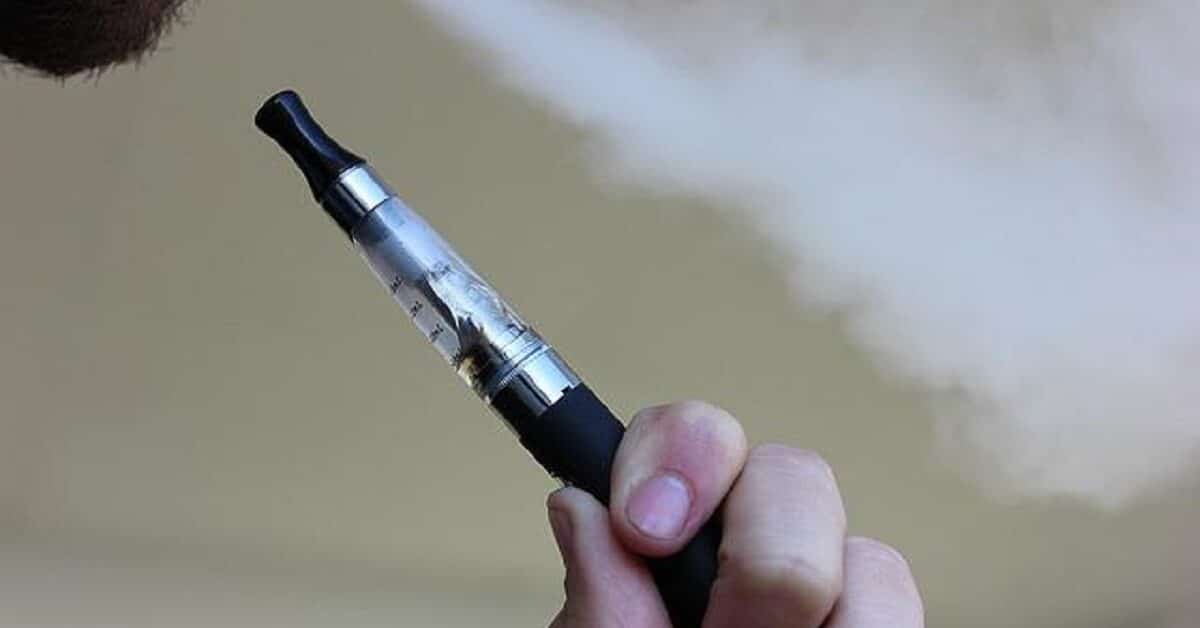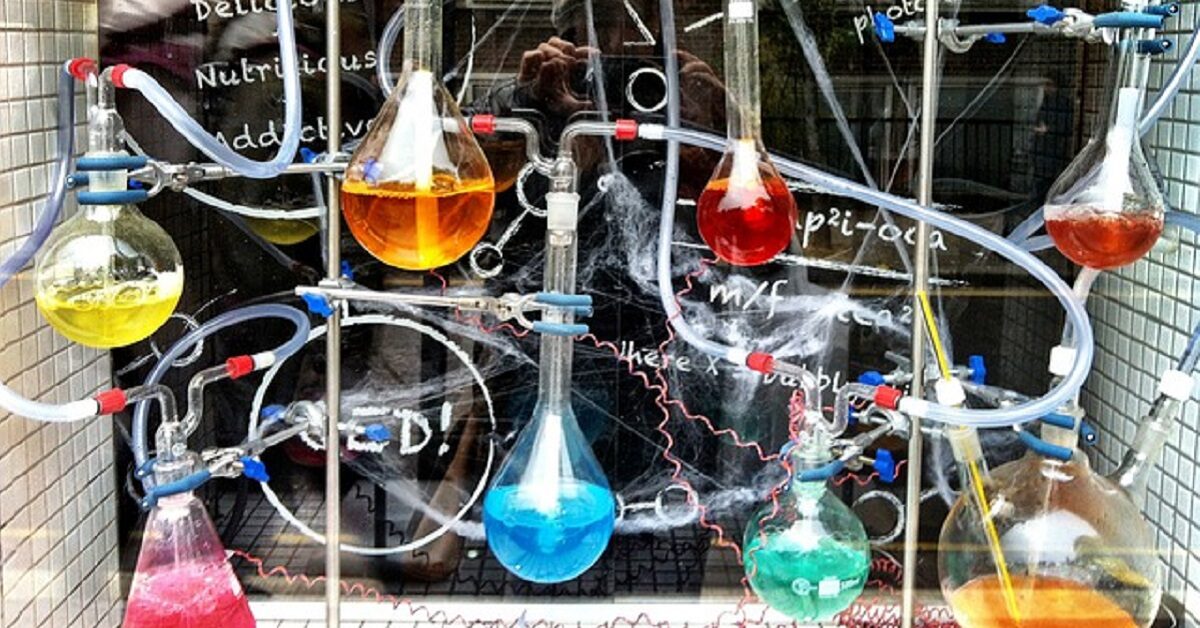
Synthetic nicotine is made in a laboratory using various chemical substances as starting materials or precursors.
The tobacco and vape industries promoted it as an alternative to tobacco-derived nicotine (TDN).
Synthetic nicotine-based vapes or e-cigarettes gained popularity as many producers switched from marketing e-cigarette products containing TDN.
They switched to avoid regulatory restrictions on the marketing of flavored vaping products.
FDA restrictions were due to concerns about the health impact of flavored vaping products on susceptible young consumers (Read: FDA regulation of synthetic nicotine 2022).
This article offers in-depth answers to questions about synthetic nicotine (SyN). It addresses your concerns regarding the safety and adverse health effects of SyN products (see list of contents below).
We answer your questions in sufficient detail to give you a comprehensive overview of the subject.
We also offer additional references for readers interested in further technical details beyond the scope of the article.
Contents:
What is considered synthetic nicotine?
Synthetic vs. tobacco-derived nicotine
–Nicotine exists in two forms: R- and S-nicotine
–S- vs. R-nicotine isomer
Differences between synthetic and natural nicotine
–S-nicotine is the naturally occurring isomer
–S- vs. R-nicotine: Pharmacological and metabolic differences
–R-nicotine: Potential pharmaceutical uses and benefits
Nicotine, Alzheimer’s and Parkinson’s diseases
Is synthetic nicotine safe?
–Synthetic vs. tobacco-derived nicotine: Impurities
–Synthetic nicotine effects
How does nicotine cause addiction?
How does nicotine affect brain development
FDA regulation of synthetic nic (2022)
–The youth vaping epidemic
–FDA enforces policy on flavored vape products
–Congress authorized FDA to regulate synthetic nic. in 2022
Disclaimer
This article is solely for informational and educational purposes.
CARE healthy living does not recommend or promote the use or sale of tobacco, synthetic or tobacco-derived nicotine, and vape products.
Studies have shown that smoking or vaping nicotine is harmful to health.
We sourced all information in this article from peer-reviewed studies published in leading academic journals and other authoritative publications. However, it is not a substitute for advice by a qualified medical professional.
We recommend that you consult your healthcare provider regarding concerns about your health and synthetic nicotine products.
You may learn more about the harmful effects of tobacco here. You may also get in-depth information about the harmful effects of nicotine here.
Additional resources:
Harmful effects of smoking and tobacco use.
Nicotine effects on brain development
What is nicotine?

Nicotine is a colorless or pale yellow oily liquid with an acrid taste and a fishy odor when warm.
The pale yellow color turns brown on exposure.
Producers usually obtain nicotine from the cured leaves of tobacco plants (Nicotiana tabacum; Nicotiana rustica), belonging to the family Solanaceae (or nightshades).
Nicotine exists in tobacco leaves as salts (learn more about nicotine salts here).
Dried tobacco leaves have been prepared for smoking, snuffing, and chewing for centuries.
Nicotine (C10H14N2) is an addictive psychoactive substance with CNS stimulant properties. It belongs to a group of nitrogenous organic compounds known as alkaloids.
[View animated 3D models of the nicotine molecule here.]
Many plants have various alkaloid compounds.
Well-known alkaloids include quinine (antimalarial), ephedrine (CNS stimulant), caffeine, cocaine, codeine, morphine, and theobromine.
Most are pharmacologically active substances.
What is considered synthetic nicotine?
Nicotine, the pharmacologically active substance in tobacco, is traditionally produced by extraction from tobacco plants.
However, it can also be synthesized in a laboratory or manufactured in large quantities in a factory.
According to Zettler and associates (2018), the technology to produce synthetic nicotine (SyN) has existed since the 1940s.
Jordt (2021) reported that the tobacco industry considered introducing SyN products to the market in the 1960s. The industry abandoned the proposal due to high costs and the inability to make products with sufficiently high purity.
But researchers later developed more efficient and economical production methods.
The technical developments drove the market emergence of SyN products in reaction to increased regulatory restrictions on flavored vaping products.
Synthetic vs. tobacco-derived nicotine

Tobacco-derived nicotine (TDN) and synthetic nicotine (SyN) have the same molecular formula C10 H14 N2 (10 carbon, 14 hydrogen, and two nitrogen atoms).
Nicotine exists in two forms: R- and S-
Nicotine is a chiral molecule that exists in the form of two stereoisomers or enantiomers: R-nicotine and S-nicotine (Jordt, 2021).
In chemistry, isomers are molecules that have the same chemical formula but different arrangements of atoms.
Isomers may have different chemical properties.
Stereoisomers are isomers with molecules distinguishable only by the spatial (three-dimensional) orientation of their structures.
A type of stereoisomerism is known as enantiomerism.
Stereoisomerism and enantiomerism are properties unique to chiral molecules.
A chiral molecule is any that has a structure that is non-superimposable on its mirror image. The molecule and its mirror image have identical structures but different spatial orientations.
A chiral molecule and its mirror image are said to be enantiomers.
S- vs. R-nicotine
S- and R-nicotine are enantiomers of the chiral molecule nicotine.
Chemistry teachers often use the concept of “handedness” to explain the meaning of chirality (the word “chiral” is from a Greek word meaning “hand”).
Your body exhibits handedness or chirality.
Your left and right sides have identical structures, but one is a mirror image of the other.
You can easily demonstrate that the identical structure of your right and left hands have spatial orientation asymmetry.
If you hold up your hands so that both palms face the same direction, you can’t make them match, overlap, align, or coincide by sliding one over the other.
You always have one thumb sticking out in one direction and the other in the opposite direction.
Similarly, nicotine is a chiral (“handed”) molecule that exists as two non-superimposable mirror image forms.
The two forms — R- and S-nicotine– are known as enantiomers.
Chemists describe molecules exhibiting chirality as being optically active:
S-nic is designated as levorotatory (-) because it is the form that rotates plane-polarized light to the negative (“left”) direction.
R-nic is described as dextrorotatory (+) because it rotates plane-polarized light to the positive (“right”) direction.
Enantiomers have identical chemical properties. They are distinguishable only in the direction in which they rotate plane polarized light.
Differences between synthetic and natural nicotine

Although synthetic and tobacco-derived nicotine have the same chemical properties, there is a difference between them in terms of flavor.
Experienced vapers say synthetic nicotine has a more neutral flavor than tobacco-derived nic. The difference is subtle and it could be due to the fact that synthetic nicotine is purer than tobacco-derived nic.
Tobacco-derived nicotine has impurities, such as tobacco-specific N-nitrosamines (TSNAs) (read more about tobacco-derived impurities here).
In technical terms, synthetic and tobacco-derived nicotine may have difference proportions or relative concentrations of the two enantiomers of the molecule.
As discussed in the previous section, nicotine is a chiral molecule with two forms (R- and S-) known as enantiomers.
S-nicotine is the naturally occurring isomer
S-nicotine (−) is considered the naturally occurring isomer because it is the prevalent form in tobacco leaves (>99%) (Jordt, 2021). R-nicotine constitutes only 0.1–0.6% of the total nic content of tobacco leaves (Benowitz and associates, 2009).
Jordt (2021) reported that synthetic nicotine (SyN) containing both R- and S-stereoisomers at equal amounts (racemic mixture) has been available for many years.
Racemic SyN containing equal proportions of the two enantiomers (50:50) is different from tobacco-derived nicotine (TDN) because it has a higher concentration of R-nicotine.
[Note: TDN also contains tobacco-derived impurities (Read about TDN impurities here).]
As previously mentioned, in the 1960s, the tobacco industry considered using SyN to adjust the nicotine: tar ratio in combustible cigarettes (Jordt, 2021).
However, only racemic SyN was available in the 1960s. The industry could not use it due to the high cost of production and concerns about the health effects of the higher concentration of the R-isomer.
TDN with a high concentration of S-nic (>99%) was considered safer and more economical.
While some producers continued marketing the racemic mixture, others developed enrichment methods to increase the proportion of the S-stereoisomer (≥99%).
But commercial producers soon patented stereoselective pathways for synthesizing pure S-nicotine (Jordt, 2021).
The market availability of the racemic and enriched versions caused concerns about the accurate labeling of marketed products.
Regulators feared that the additional cost of the enrichment process could make some marketers deceptively label the racemate as the enriched form.
S- vs. R-nicotine: Pharmacological and metabolic differences
Concerns about the potential health effects of racemic SyN were due to the knowledge that bioactive enantiomers sometimes have different modes of interaction with receptors.
Thus, enantiomers may have significantly different pharmacological activity and toxicity.
Studies have shown differences in the metabolism of R- and S-nicotine. The differences are likely due to the different modes of interaction with cell receptors (see Jordt, 2021; see also Ying and Chen, 2019).
The differences in the modes of interaction with receptors are likely due to the different spatial orientations of molecular structure.
Spatial orientation may affect how a molecule binds to receptors on cellular membranes (McConathy and Owens, 2003; Brooks and Daniel, 2018).
R-nicotine: Potential pharmaceutical uses and benefits
Scientists haven’t learned enough about the pharmacology of R-nicotine. Research is ongoing on the possible beneficial pharmacological uses of R-nicotine.
Studies suggest that R-nic (+) is less pharmacologically active than S- (Jordt, 2021; Cheetham et al, 2022).
The R-isomer is a significantly less potent agonist of nicotine receptors than the S-isomer. It is also less toxic.
Nicotine, Alzheimer’s, and Parkinson’s diseases

Pogocki and associates (2007) suggested investigating R-nicotine and its derivates for potential roles in treating neurodegenerative disorders, such as Alzheimer’s and Parkinson’s disease.
Zettler and colleagues (2019) reported that preliminary research suggested nicotine could treat the symptoms of Alzheimer’s disease, Parkinson’s disease, and schizophrenia.
However, studies have not yielded conclusive evidence that nicotine may treat these neurodegenerative disorders.
Interested readers may consult the following sources for more information about studies assessing the potential roles of nicotine in treating mild cognitive impairment (MCI), Alzheimer’s’ disease, and Parkinson’s disease.
- López‐Arrieta et al., 2001: Nicotine for Alzheimer’s disease.
- Martyn and Gale, 2003: Tobacco, Coffee, and Parkinson’s disease.
- Newhouse et al., 2012: Nic. treatment of mild cognitive impairment.
- Quik et al., 2015: Nic. and Parkinson’s disease; implications for therapy
- Valentine and Sofuoglua, 2018: Cognitive Effects of Nicotine: Recent Progress.
Some studies also reported that while S-nic induced weight loss in rats, R-nic did not trigger weight loss (Zhang et al., 1994).
Read more about nicotine effects on body weight and BMI here.
We also previously reported that some studies suggested that people who smoke weed have lower body weight and body mass index (BMI) than non-smokers.
However, studies have not produced conclusive evidence that these substances may play beneficial roles in weight loss.
How is synthetic nicotine made?
Researchers had developed pathways for producing racemate synthetic nicotine (SyN) before developing pathways for making pure synthetic S-nicotine.
Manufacturers produce racemic SyN using a variety of compounds as starting materials or precursors (Cheetham et al., 2022).
The racemate is then subjected to enrichment or purification to yield a product containing ≥ 99% pure (S)-nic.
Some of the patented synthetic pathways for producing racemic SyN start with ethyl nicotinate (an ester of niacin or nicotinic acid).
A process patented by Next Generation Labs (NGL) involved reacting ethyl nicotinate with N-vinyl-2-pyrrolidinone to form the tobacco alkaloid myosmine (Jordt, 2021).
Mysosmie undergoes reduction to form nornicotine, which undergoes methylation to form a racemic mixture of the stereoisomers R- and S-.
Researchers have also developed stereoselective (or enantioselective) synthetic pathways that directly yield S-nicotine.
Cheetham and associates (2022) reported a method patented by Zanoprima Lifesciences that produces S-nicotine through a pathway involving the enzymatic reduction of myosmine to produce ≥ 99% (S)-nornicotine.
Nornicotine then undergoes methylation to yield pure (S)-nic.
Multiple economically viable pathways for synthesizing pure S-nic have been developed. However, further details are beyond the scope of this article.
Interested readers may consult the following sources for more information:
- Jordt S. Synthetic nic. has arrived. Tobacco Control Published Online First: 07 September 2021. doi: 10.1136/tobaccocontrol-2021-056626.
- Peter A. Crooks. Chemical properties of nic. and other tobacco-related compounds.
- Estefanía Del Castillo and Kilian Muñiz. Enantioselective Synthesis of Nic. via an Iodine-Mediated Hofmann–Löffler Reaction. Organic Letters 2019 21 (3), 705-708. DOI: 10.1021/acs.orglett.8b03909.
- Kun Huang, Margarita Ortiz-Marciales, Melvin De Jesús, Viatcheslav Stepanenko. A New and Efficient Approach to the Synthesis of Nic. and Anabasine Analogues. J Heterocycl Chem. 2009 Nov 6; 46(6): 1252–1258. doi: 10.1002/jhet.233.
Is synthetic nicotine safer?

Despite promotional claims, there is no evidence that synthetic nicotine is a safer or healthier alternative to tobacco-derived nicotine (TDN).
TDN has a high concentration of S-nicotine (>99%).
Tobacco-derived S-nicotine is chemically identical to synthetic S-nicotine. Thus, it is reasonable to expect that both have the same health effects on users.
Synthetic vs. regular nicotine: Impurities
A difference between synthetic and tobacco-derived S-nicotine is that the latter contains tobacco-derived impurities.
Synthetic S-nicotine could be 100% pure because it does not contain tobacco-derived impurities. The synthetic product is free from tobacco-derived impurities because it is not extracted from tobacco but made in the lab from chemical precursors.
Besides nicotine, traditional cigarettes and vapes deliver a host of toxic and carcinogenic products, such as tobacco-specific N-nitrosamines (TSNAs).
According to Eaton and colleagues (2018), TSNAs are potent carcinogenic chemicals formed during the curing process (Hecht, 1998; Czoli and Hammond, 2018).
Researchers have detected TSNAs in vape juices and aerosols.
The levels and types of tobacco-derived impurities found in vape juices depend on the grade of tobacco-derived nic. (TDN) used in the production process. Even pharmaceutical-grade TDN that has undergone purification to remove impurities will contain low levels of TSNAs.
Several studies reported significant nitrosamine levels in samples of commercially available vape juices.
Using liquid chromatography-tandem mass spectrometry, researchers Kim and Shin (2013) detected the following TSNAs in vape juices available in the Korean market:
- N’-nitrosonornicotine (NNN)
- 4-(methylnitrosamino)-1-(3-pyridyl)-1-butanone (NNK)
- N’-nitrosoanabasine (NAB)
- N’-nitrosoanatabine (NAT)
Farsalinos and co-workers (2015) conducted a study to evaluate nic levels and tobacco-derived toxins in vape juices containing Naturally Extracted Tobacco (NET) concentrates.
NET concentrates are derived from cured tobacco leaves by solvent extraction and steeping.
The researchers analyzed 21 samples of vape juice products commercially available in the U.S. and Greece.
Eleven samples contained Naturally Extracted Tobacco (NET) concentrates, while 10 samples contained tobacco leaf-flavored vape juices.
The researchers found that all samples contained tobacco-specific nitrosamines (TSNAs) and trace levels of formaldehyde.
TSNAs and formaldehyde are carcinogens.
Synthetic nicotine health effects
Tobacco-derived and synthetic S-nicotine are chemically identical. Thus, it is likely that they have the same health effects.
Regardless of whether they contain synthetic or tobacco-derived nicotine, cigarettes and vapes deliver the drug quickly to the brain.
The adverse health effects of nicotine are well known:
According to Murray (1991), it has both stimulant and depressive activity. It is also an addictive psychoactive drug.
Nicotine affects many body systems, including the central and peripheral nervous systems. It also affects the cardiovascular, skeletal, and gastrointestinal systems.
According to Mishra and colleagues (2015), nicotine use poses multiple health hazards to young and older users.
It increases the risk of cardiovascular, respiratory, gastrointestinal, and reproductive health disorders. The substance compromises immunity, increases oxidative stress, triggers apoptosis (cell death), and adversely affects cell proliferation.
Nicotine triggers DNA mutations that may lead to cancer. It promotes tumor proliferation and metastasis. It also increases resistance to chemo and radio therapeutic agents.
How does nicotine cause addiction?

Nicotine activates nicotine-specific receptors in the brain.
The activation boosts levels of brain neurotransmitters, such as the pleasure neurotransmitter dopamine (Zettler et al., 2019).
Dopamine release induces pleasurable states and sensations, such as relaxation, reduced stress, improved mood, enhanced vigilance, and cognitive function (Benowitz, 1996).
Pleasure experience associated with dopamine release has a reinforcing effect on smoking behavior. However, the brain soon adapts to a particular dosage of the drug.
The adaptation compels the user to increase intake to sustain the experience of pleasure. The compulsion triggers a vicious cycle of increasing doses and withdrawal symptoms.
Withdrawal symptoms include nervousness, restlessness, irritability, and anxiety.
Increased tolerance to nicotine doses is associated with structural changes, such as an increased number of nicotine-specific receptors.
Nicotine is considered to be a gateway drug alongside alcohol and marijuana (weed).
How does nicotine affect brain development?
Young people are especially prone to nicotine addiction and associated adverse effects. The availability of flavored products enhances the risk of addiction because young people find them appealing.
People are more likely to form lifelong substance abuse habits when exposed during their youth. It happens because developing brains are more susceptible to addiction-induced structural changes.
Studies show that nicotine alters brain development in young people.
Altered brain development causes memory, concentration, and learning deficits (England and associates, 2015).
Pregnant women should also avoid the drug because it harms the fetus. It deprives the fetus of nutrients required for the development of tissues.
Blood flow restriction and nutrient deficit cause fetal brain damage, congenital deformities, and impaired cardiac development. It may also cause learning disabilities and hyperactivity disorder.
FDA regulation of synthetic nicotine (2022)

The vape industry’s switch to synthetic nic gained momentum in 2020 after the FDA imposed regulations to prevent the marketing of flavored vape products containing tobacco-derived nicotine (TDN) to underage consumers.
The youth vaping epidemic
Producers marketing fruit-flavored products drove the increased popularity of vaping among teens and young adults (Jones and Salzman, 2020).
According to the CDC, the 2021 National Youth Tobacco Survey found that a tenth of high school students reported vaping regularly.
The majority reported using flavored vape products, while a quarter said they preferred a particular synthetic nicotine-containing brand.
According to England and associates (2015), despite unproven arguments that vaping is less harmful than traditional cigarettes, the potential adverse effects could have significant public health consequences.
The authors noted that human and animal data suggested nicotine exposure during the developmental stages (fetal, childhood, and adolescence) has significant adverse health consequences.
Adverse health effects included impaired fetal brain and lung development. It also included altered cerebral cortex and hippocampus development in adolescents (cf. Nic effects on brain development).
Such research evidence convinced health authorities of the need to act to stop the youth vaping epidemic.
In 2021, the FDA imposed regulatory restrictions on the marketing and sale of fruit-flavored electronic nicotine delivery systems (ENDS) to young consumers.
FDA enforces policy on flavored vape products
To skirt FDA restrictions, e-cigarette manufacturers began promoting synthetic “tobacco-free” products.
The regulatory authorities did not immediately respond due to a delay in deciding how best to regulate synthetic products.
Some producers argued that since synthetic nicotine was not derived from tobacco, it should not be regulated by the FDA’s Center for Tobacco Products (CTP) but by the Center for Drug Evaluation and Research (CDER).
The CDER regulates over-the-counter (OTC) and prescription drugs, including health products, such as fluoride toothpaste and nicotine replacement therapies.
Congress authorized FDA to regulate synthetic nic. in 2022
However, the authorities moved in 2022 to close the regulator loopholes that e-cigarette manufacturers were exploiting.
Congress passed a bill in March 2022, requiring FDA to regulate vape products containing synthetic nicotine.
President Joe Biden approved the law, and it came into effect in April 2022.
The law empowered the FDA to regulate synthetic nic products alongside tobacco-derived nicotine products. It also required marketers to submit a premarketing application to keep their products on the market.
Marketers whose products were not approved were required to pull them from the market.
Producers who were approved had to strictly adhere to FDA regulations.
The regulations required companies producing, marketing, selling, or distributing tobacco-derived and synthetic nicotine to not market, sell or give away their products to underage buyers.
They were also prohibited from making claims that their products were less harmful than cigarettes without FDA authorization.

